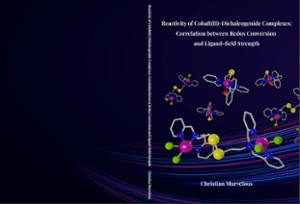Proefschrift
Reactivity of cobalt(II)-dichalcogenide complexes: correlation between redox conversion and ligand-field strength
The redox-conversion reaction of metal-disulfide and metal-thiolate complexes are important, as they may shed light on electron-transfer reactions that often occur in Nature.
- Auteur
- Marvelous, C.
- Datum
- 05 juli 2022
- Links
- Thesis in Leiden Repository

Despite their importance, very few examples have been reported. In addition to that, there is a limited understanding of how the coordination environment of the metal ion affects this reaction. In this thesis, our investigation was set based on the ligand-field theory to determine its correlation with the redox-conversion reactions in cobalt-based systems. Our experiments revealed that using an exogenous ligand with a strong ligand-field character may induce the redox conversion from cobalt(II)-disulfide complexes to cobalt(III)-thiolate complexes. Using this knowledge, the possibility of the redox-conversion reaction was also extended from cobalt(II)-diselenide to cobalt(III)-selenolate complexes.Finally, we have come up with several conclusions about the redox-conversion reactions of the cobalt(II)-dichalcogenide complexes. It was revealed that the conversion is affected by the ligand-field strength of the dichalcogenide ligand. The smaller ligand-field strength can be counterbalanced with the introduction of the strong auxiliary ligand. Lastly, the cleanliness of the conversion depends on the magnitude of the overall ligand-field splitting energy of the complex.
